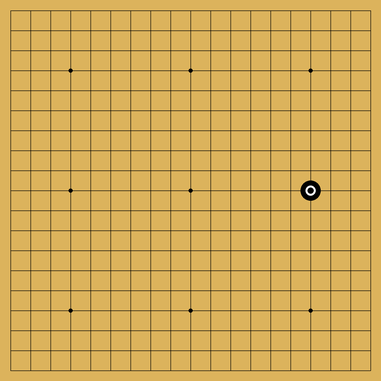Yeah, and funny thing is that the deep endgame is the part where it’s the worst relative to human abilities. Not because it’s objectively worse, just relative to humans. Humans can be good at counting accurately in the deep endgame and therefore be competitive with or even better than bots then. But early in the game humans are terrible compared to bots at estimating early advantages and disadvantages, so there bots completely dominate (except in the presence of specific blind spots, etc).
Part of this is because humans switch methods as the game goes on. In the opening, all you can do is holistic intuitive feel, and that’s not very accurate. But late in the game as borders near completion, a strong player can switch methods from just intuitively feeling a position, to instead consciously enumerating points and quantifying everything, and gain a lot of accuracy.
Bots only ever use their intuitive feeling, or something loosely analogous to that, even once the position becomes precisely countable. Hence you can get funny results like deep in the endgame when Black is destined to win by 1.5 points and any strong player spending the time could solve the endgame and absolutely prove B+1.5, maybe the bot estimation is some funny fractional value like B+1.9. This is because unlike humans, the bot is not counting the position. The bot is doing the same thing it does in the opening - glancing at the whole board, and declaring based on intuitive whole-board feeling that it thinks the degree of advantage in points is something around B+1.5 or B+2.5, without ever counting it. This intuitive feeling is just so absurdly good that it is usually within fractions of a point of the correct answer you would obtain by explicit counting.
This is also why for large score differences it can be off by a whole point or more. E.g. as far as at-a-glance whole-board feeling goes, “black wins by 70.5” feels very similar to “black wins by 71.5”, they’re both “black wins by a lot”. It’s still usually not far off despite that.
So in the opening and early parts of the game, when explicit counting isn’t possible, such a good intuitive feeling just totally dominates what humans are capable of. We’re just left with bot intuition as being basically the most accurate thing by far we have at the moment.
(Again, caveat being that the position is “normal” and free from extremely sharp imminent tactics or blind spots. Remember, the entire thing the deep learning revolution has done is turned the comparative advantage of bots vs humans on its head! Strength of the machine is fuzzy holistic feeling and high level intuitive judgment, strength of humans is sharp tactical calculation and concrete mechanical reasoning).

